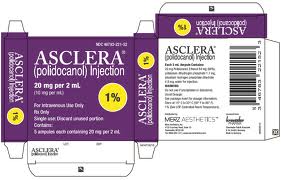
Compared to saline and STS, what are the advantages of Asclera sclerotherapy solution? It specifically has two. First, it is much less painful to inject. Many patients would say that it is painless during injection. Secondly, it is not associated with or has much less tissue necrosis potential with extravasation. It may have less potency than STS but clinical studies show equal efficacy in spider veins of similar size. It is available in 0.5% and 1% concentrations in 2ml ampoules.
Asclera offers a new sclerotherapy solution to U.S. physicians that is an effective aesthetic leg treatment for bothersome spider veins. For small vessels 1mm or less I use the 0.5% concentration. For larger vessels the 1% concentration is more effective.
Dr. Barry Eppley
Indianapolis, Indiana


